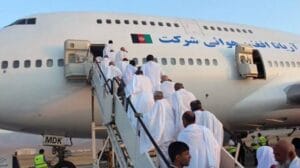Boeing’s Starliner to join exclusive club of crewed U.S. spacecrafts with upcoming launch

Boeing’s Starliner capsule is set to join the elite ranks of U.S. crewed spacecraft with its forthcoming launch, marking a pivotal moment in the history of American space exploration. This significant milestone places Starliner among a select group of vessels designed to carry NASA astronauts into space, showcasing the enduring legacy of U.S. innovation in the field.
The United States’ journey into space began with Project Mercury, the country’s “man-in-space” program, launched in 1958, just days after NASA’s formation. On May 5, 1961, Alan Shepard became the first American to fly in space with a 15-minute suborbital journey in a one-man capsule. A year later, in February 1962, John Glenn became the first American to orbit Earth. These early successes laid the groundwork for future achievements, including Apollo’s historic Moon landing in 1969.
Following Mercury, NASA’s Gemini program sought to extend mission duration and develop critical orbital maneuvers. This included mastering docking procedures and safe spacewalks, vital skills that would later enable lunar exploration. Gemini’s two-man capsules, featuring onboard computers, provided the foundation for the Apollo program, which eventually led to the iconic Saturn V rocket and the Moon landings. The tragic fire during a preflight test for Apollo 1 in 1967, however, reminded the world of the inherent risks associated with space exploration.
NASA’s Space Shuttle program, spanning from 1981 to 2011, revolutionized space travel with its reusable design, featuring rocket launches and glider-like landings. It facilitated numerous milestones, including the launch of the Hubble Space Telescope and the construction of the International Space Station. Yet, the program was also marked by tragedies: the 1986 Challenger disaster during launch and the 2003 Columbia disaster during re-entry, resulting in the loss of 14 lives in total.
After the Space Shuttle’s retirement, the United States lost its capacity to launch astronauts from domestic soil, turning to Russian Soyuz rockets for transportation. NASA subsequently adopted a commercial model, contracting private companies for crewed missions. SpaceX emerged as a leader in this new era, launching its first crew to the International Space Station (ISS) in 2020 and flying a total of 49 people on its Dragon vehicles since then.
Boeing’s Starliner, delayed due to technical issues, is now ready to take its place among America’s crewed spacecraft. With this launch, Boeing aims to overcome past challenges and reassert its position in the space industry. Both Starliner and Crew Dragon employ the classic gumdrop-shaped capsule design, incorporating modern technology such as sleek displays, autonomous flight capabilities, and full reusability. This upcoming mission will determine if Boeing can match SpaceX’s success and ensure the United States maintains its leading role in crewed space exploration.












